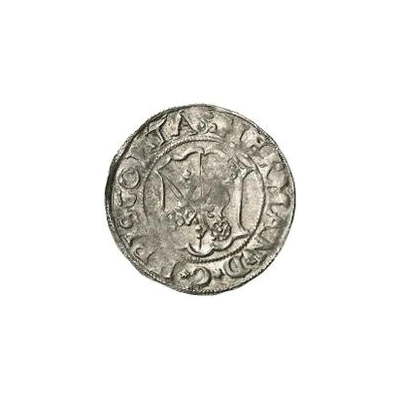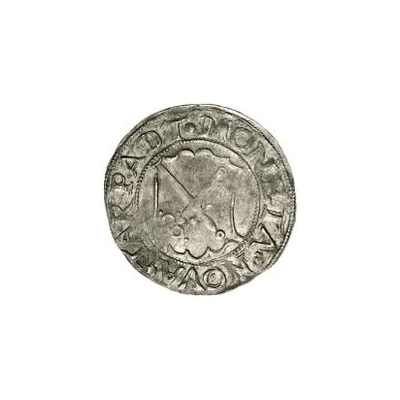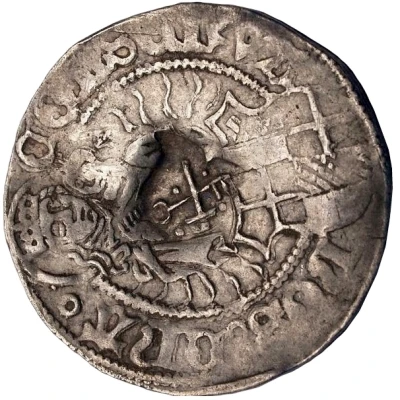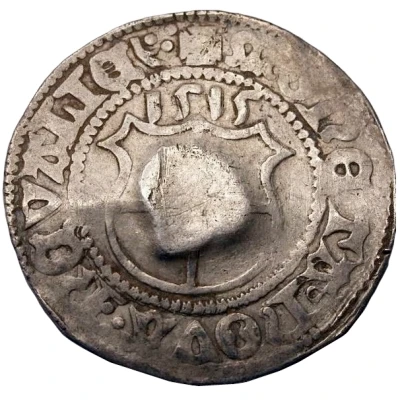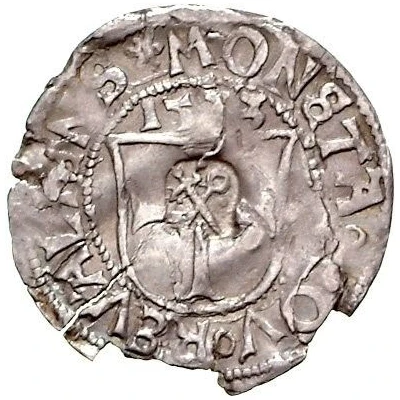
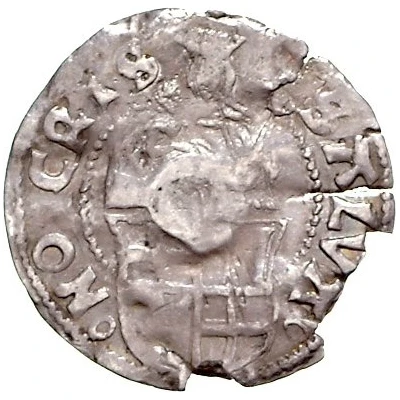

© WAG Online Auktions
1 Ferding Dorpat countermark ND
| Silver (.930) | 2.46 g | 24.5 mm |
| Issuer | Bishopric of Dorpat (Livonian Confederation) |
|---|---|
| Bishop | Johannes VI Bey (1528-1543) |
| Type | Standard circulation coin |
| Years | 1530-1534 |
| Value | 1 Ferding = 12 Schilling |
| Currency | Schilling (1422-1558) |
| Composition | Silver (.930) |
| Weight | 2.46 g |
| Diameter | 24.5 mm |
| Shape | Round (irregular) |
| Technique | Hammered, Countermarked |
| Orientation | Variable alignment ↺ |
| Demonetized | Yes |
| Updated | 2024-10-06 |
| Numista | N#142944 |
|---|---|
| Rarity index | 97% |
Reverse
Person above four-sectioned shield holding child to the left, all surrounded by legend.
Script: Latin (uncial)
Lettering: SALVA · NO · CRIS
Lettering (regular font): SALVA · NO · CRIS
Translation:
Servare Noster Christ
Save us, Christ
Edge
Plain
Comment
The host coin for the countermark is a 1 Ferding piece from the Livonian Order, minted in Reval. The latest known date is 1534, which was probably the date the host coins were countermarked. Even so, some could have also been marked a few years earlier.The Bishopric of Dorpat also struck their own countermarks onto these coins.
In 1525, when the silver purity of the schillings was decreased, the ferdings increased in value. Before, 1 Ferding = 9 Schilling; after, 1 Ferding = 12 Schilling. The countermark was used to show the increase of the value of the ferdings.
The exact lettering of the surrounding legend may vary.
1528:
1) MONETA : NOVA · REVAL · / SALVA · NOS : CRIS
2) MONET · NO · REVALI · / SALVA · NO : CRIS
1530:
1) MONETA · NO · REVALIE · / SALVA · N - O · CRIST
2) MONETA · NO · REVALIE · / SALVA · N · CRIS
1533:
1) MONETA : NOVA · REVALIEN · / SALVA · NO : CRIS
2) MONETA : NOV · REVALIENS · / SALVA · NO : CRIS
1534:
1) MONETA : NOVA : REVALIEN / SALVA · NO : CRIS
2) MONETA : NOVA · REVALIE · / SALVA · NO : CRIS
Interesting fact
One interesting fact about this coin is that it was used as a form of currency in the Bishopric of Dorpat, which was a region in the Livonian Confederation, a historical state that existed from the 13th to the 16th century in the territory of present-day Estonia and Latvia.
